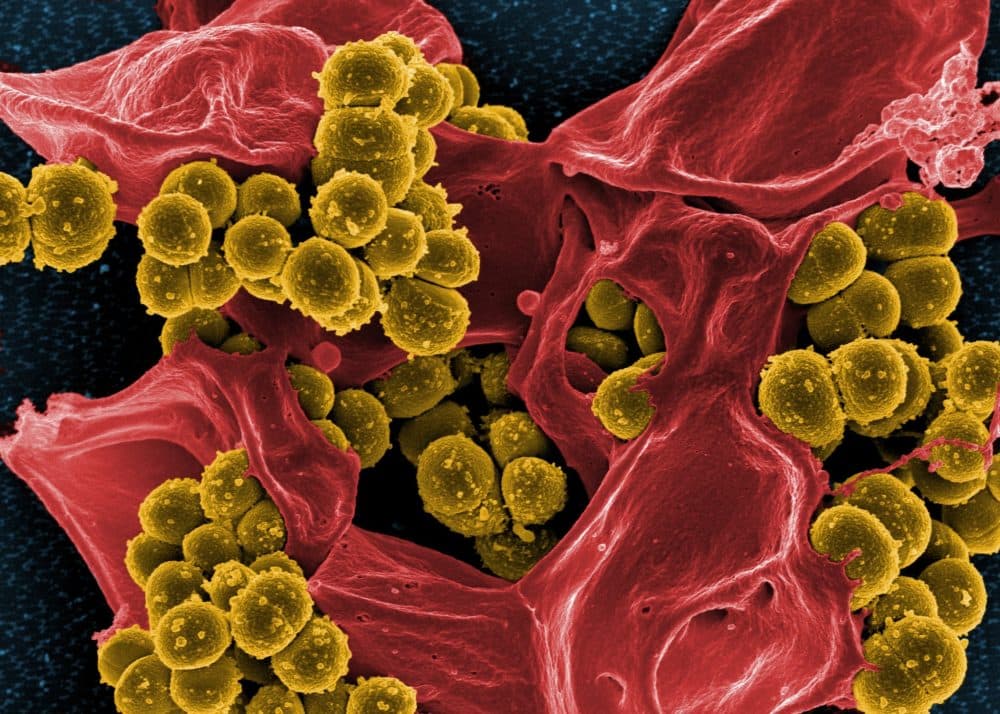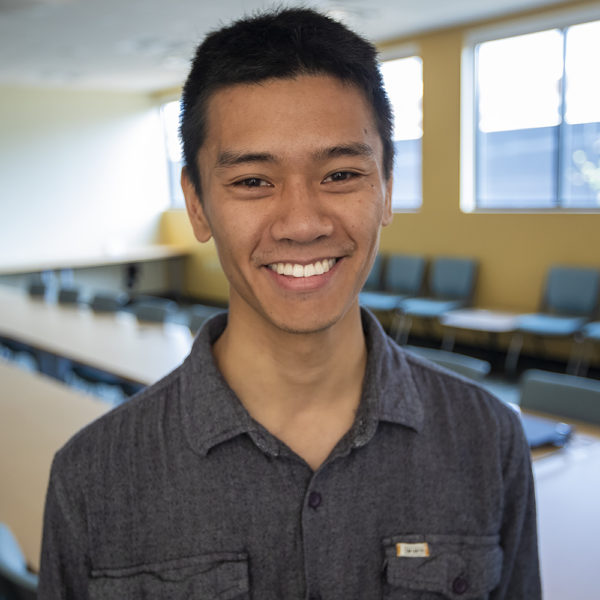Advertisement
A Compound, Discovered By Artificial Intelligence, May Help Reinvigorate A Slowing Antibiotic Field

An algorithm designed by researchers at MIT has found a compound that could lead to development of a potentially powerful new antibiotic, something that has been scarce in the pharmaceutical industry of late.
The compound, which scientists named Halicin after the murderous computer from the classic movie "2001: A Space Odyssey," showed a broad ability to kill bacteria, raising hopes that artificial intelligence might boost a lagging antibiotic development field.
Pharmaceutical companies have been retreating from antibiotic development because it’s less profitable than other drugs, says James Collins, a bioengineering professor at the Massachusetts Institute of Technology.
“A number of market forces make it not lucrative. With antibiotics, you take them for a few days, maybe a week. Other drugs, you take them sometimes for the rest of your life,” he says. “Given it costs as much to make an antibiotic as it does a drug for another indication, it makes business sense to focus on drugs with the longer runway."
In addition, Collins notes the prices companies can charge for antibiotics are often lower than other drugs.
But he and his colleagues are hoping that their algorithmic approach will help to reinvigorate antibiotic development.
“I think it can really help to address this by dramatically reducing the time and cost to develop an antibiotic,” he says. “And it gives us an ability to discover molecules with novel chemistries against the most difficult-to-treat infections.”
The algorithm uses machine learning, a type of artificial intelligence that analyzes large sets of data for patterns and other types of information. Then it uses what it gleans to make new discoveries and predictions. The researchers' algorithm analyzed millions of different molecules and chemicals as part of the search for a potential new antibiotic.
“In this case, it was like 100 million molecules or something,” says Regina Barzilay, a computer scientist at MIT.
One of the drug candidates it came up with was Halicin.
WBUR spoke with Barzilay and Collins about their algorithm, the potential new antibiotic and their hopes for the future. This interview has been edited for length and clarity.
How does this algorithm work and what does it do exactly?
Barzilay: If a molecule has particular substructures, then it’s likely that the molecule will have certain properties. You can measure how much a molecule inhibits the growth of a bacterium or how toxic it is.
So, the algorithm can learn different pieces of information from different molecules in the training set. Then it combines information in an interesting way and is able to make predictions about molecules that it’d never seen before. Even from a totally different type of chemical.
It enables you to go through huge amounts of chemicals and identify potentially interesting molecules to test. It costs a lot to manufacture molecules, so this algorithm can look at chemical structures and identify which ones are useful. It doesn’t have to just be antibiotics – it can do it for other kinds of drugs, too.
How did you use it to find Halicin?
Collins: We asked the model to predict which molecules out of a database would have antibacterial activity – but didn’t resemble existing antibiotics. That way whatever the model found would be more likely to kill multi-drug resistant bacteria.
A lot of new antibiotics fail to kill drug resistant superbugs. What about Halicin and how does the drug work?
Collins: The drug works by disrupting the membrane of bacteria and the flow of protons [positively charged particles] across the membrane. That disrupts the ability to generate energy needed to live.
We found that it does kill lots of bacteria. It has activity against most bacterial pathogens including multi-drug resistant ones. We tested it against 36 different panels of extensively drug resistant pathogens from the CDC. It was effective against 35 of those. It also had excellent activity at killing C. difficile, a nasty pathogen [that often develops in patients who have taken antibiotics] . And in mice it effectively killed Acinobacter baumannii, which causes a very nasty skin infection and is at the top of the WHO’s list of deadly pathogens for which new antibiotics are needed.
So we named it Halicin as an homage to HAL, the AI computer from "2001: A Space Odyssey." The computer has killing tendencies. And our molecule has strong killing ability against bacteria.
What will happen next for this drug?
Collins: We have a little more work to do on the preclinical study of the drug. We are very interested in partnering with pharmaceutical companies, biotech or a non-profit to advance the molecule to clinical testing. We think it has great potential as a very potent antibiotic, one that could be used to address a number of difficult to treat conditions right now.
How do you hope this algorithm will be used and what difference do you think it’ll make?
Barzilay: The algorithm is actually already being used. It’s free and available online through something called MIT MLPDS. It has partners with a lot of pharmaceutical companies in Cambridge – a lot of the big ones and some of the small.
Collins: I don’t think antibiotic resistance will ever be solved. I think the study shows the power of harnessing artificial intelligence to address the antibiotic resistance crisis. The algorithm could also help with neurological conditions, cancer, metabolic disorders. The underlying molecular aspects to the deep learning algorithms [are] not specific to antibiotics.
Editor's note: this post has been updated to clarify that the compound is a candidate for drug development but is not yet an antibiotic drug.
